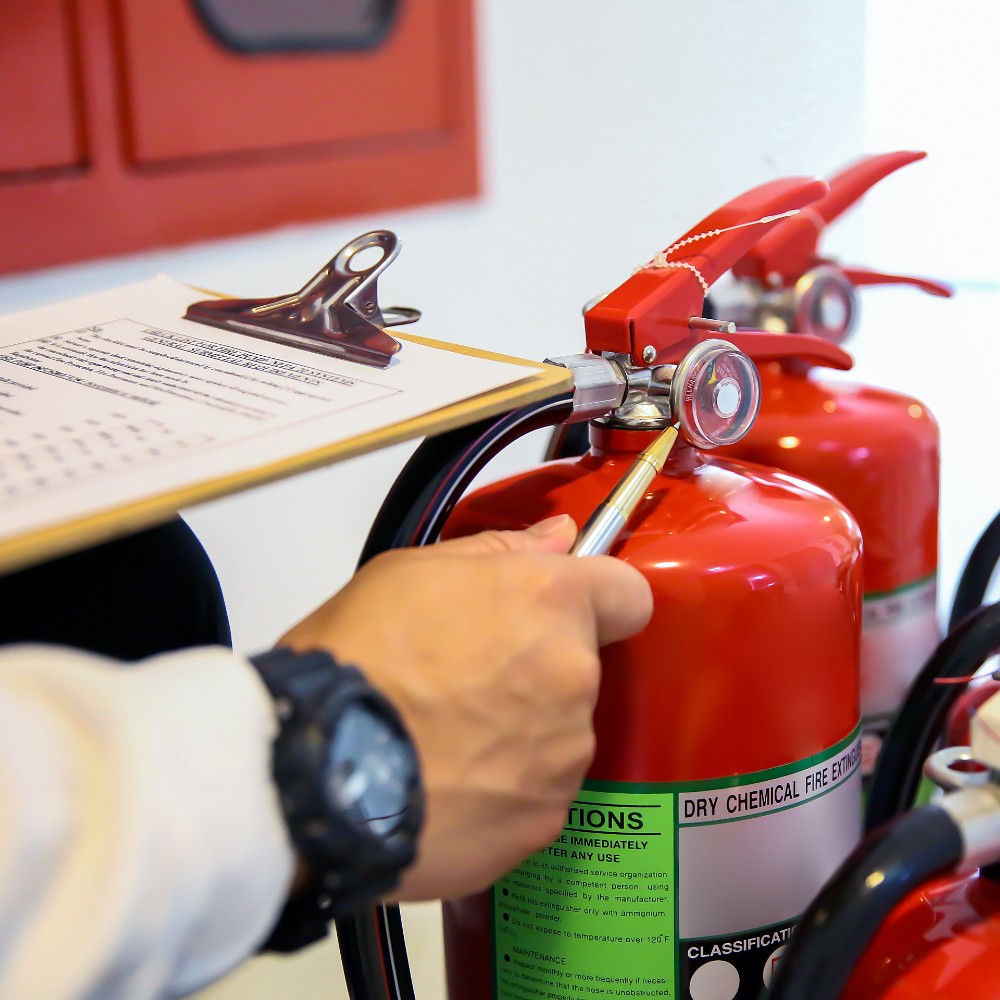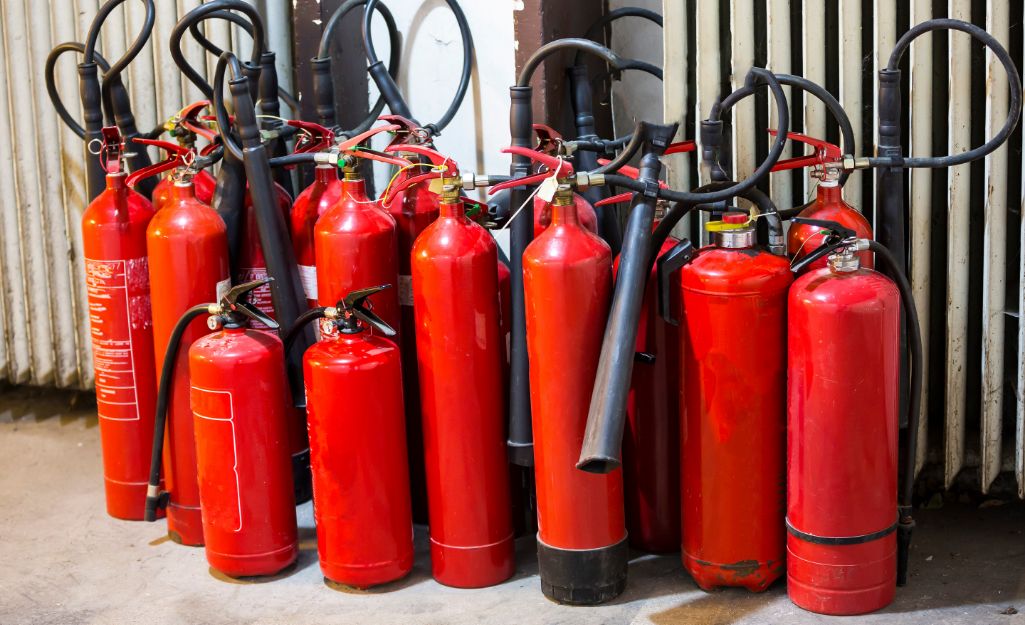How to Dispose of Fire Extinguishers

Last updated August 12, 2024
Fire extinguishers contain chemicals that are unsafe to throw into trash or recycle bins. Some require testing and maintenance to confirm when they need to be thrown away and replaced. Some areas have hazardous waste facilities that accept fire extinguishers.
This guide covers how to properly replace and dispose of fire extinguishers.
Difficulty:
Beginner
Duration:
Under 2 hours
Table of Contents
When to Replace a Fire Extinguisher
Where to Dispose of Fire Extinguishers
More Tools. More Products. More Perks.
When to Replace a Fire Extinguisher

Fire extinguishers do not have a definitive expiration date, but they typically last 10-12 years. If you are unsure how old your fire extinguisher is or inherited one in a new property, replacing it is the safest option.
Visually inspect your fire extinguisher to determine if it needs replacement. Confirm that it is placed in a readily accessible area and that it has an up-to-date inspection tag. Next, look for damage or disrepair. The hose, nozzle, handle and locking pin should all be in place and have no cracks or damages.
The pressure gauge should be in the green section, indicating the fire extinguisher is fully pressurized. Minor damages or factory errors could cause fire extinguishers to release pressure over time, which diminishes its effectiveness in an emergency.
Signs your fire extinguisher should be replaced include:
- Pressure gauge displays in the yellow or red section. If there is no pressure gauge, a certified professional should inspect the unit.
- Outer damage such as a broken handle, cracked nozzle, split hose or a missing locking pin.
- Missing inspection and maintenance sticker or tag.
- The fire extinguisher is more than 10 years old.
- The fire extinguisher has been used.
Most fire extinguishers can only be used once. Some models are rechargeable and can be serviced by a professional after each use. However, many people do not have access to the equipment necessary to refill and repressurize a fire extinguisher. In that case, the extinguisher must be properly recycled.
Many fire equipment dealers can recharge fire extinguishers. Your local fire department will also likely know where to find services in your area. Some fire departments offer the service themselves, however you should call ahead to see if an appointment is necessary.
Where to Dispose of Fire Extinguishers

Fire extinguishers contain chemicals unsafe for typical waste management plants, and they should be disposed of at a Household Hazardous Waste (HHW) facility. Research your the HHW facility in your area, or call your local fire department or city hall.
If there is no HHW facility in your area or your local facility does not accept fire extinguishers, check your local government guidelines. State and city websites typically provide guidance for how to properly dispose of fire extinguishers without access to an HHW facility.
Some communities allow fire extinguisher disposal in trash cans or recycle bins. Verify that your local waste management system accepts them before disposing of them in this way. Typically, local governments require preparation before a fire extinguisher can be thrown away in garbage or recycle bins. These preparations include:
- Release all pressure in the shell.
- Let the fire extinguisher sit for two or three days, then release again and listen for any sound indicating air is still trapped inside.
- Remove the head from the shell and dispose of it along with scrap metal or in the trash.
Pro Tip: Check if your area has an HHW facility or recharging options before purchasing a new fire extinguisher.
More Tools. More Products. More Perks.

Be more competitive and boost your bottom line with Pro Xtra, The Home Depot’s free loyalty program built for Pros. Sign up today to access the enhanced Pro Online Experience, built with the online business tools and time-saving features Pros need.
Create multiple Lists of products to help you stay organized or prepare bids. You can organize and save supply needs by property, job type, region and more.



























